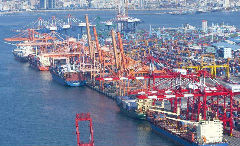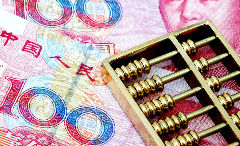China’s trade and investment in the first half of 2018
2018-07-18
CGTN
The Ministry of Commerce announced that total trade volume reached $2.21 trillion in the first half of this year, with a year-on-year growth of 16 percent.
Exports came in at $1.17 trillion, up 12.8 percent, and imports were in at 1.03 trillion, up 19.9 percent. The trade surplus was $139.65 billion, down by 27.5 percent. China’s trade volume with the US increased by 5.7 percent. And its trade volume with some countries along the route of the Belt and Road Initiative maintained rapid growth.
For example, China’s trade volume with Vietnam, Indonesia, and Russia increased by 19.8 percent, 18.8 percent, and 16.0 percent respectively. Beijing said that according to the WTO, China’s contribution to the growth of global imports was 13.2 percent in the first quarter of this year. But a senior official with the Ministry of Commerce says the picture isn’t as bright for China’s trade and commerce sectors.
“The foundation of the recovery of the global economy is not solid. Populism, anti-globalization, and trade protectionism are all rising, as trade friction is getting more intense. Our country’s trade and commerce are facing more uncertainties and unsteady factors. Our next step is to deepen the supply-side structural reform, and closely watch the China-US trade dispute. We will work with other countries to maintain the free trade system and the multilateral trading system, oppose trade hegemony and protect the fundamental interests of the country and the people,” said Song Xianmao, a senior official with the Ministry of Commerce.
The Ministry of Commerce released figures on the country’s outbound investment in the first six months of 2018 kept a steady and healthy development. China’s nonfinancial outbound investment reached $57.18 billion, with year-on-year growth of 18.7 percent. They invested in more than 3,600 overseas companies in 151 nations. Chinese companies had newly added investment in 55 countries along the route of the Belt and Road Initiative, totaling $7.4 billion, up 12 percent.
Majority of the investment flowed into the rental industry, business services, manufacturing, mining, and wholesale and retail. But there was no new program in the real estate, sports and entertainment industries.
“The protectionism in investment has been rising, which will affect Chinese companies. But Chinese companies are smart. They will adjust according to the situation. For example, the investment into countries related to the Belt and Road Initiative has increased year by year. Chinese companies are also adapting to the barriers set by some developed countries. The Chinese government has also been working with those governments to create a transparent, predictable and fair playground for Chinese companies,” said Han Yong, a senior official with the Ministry.



